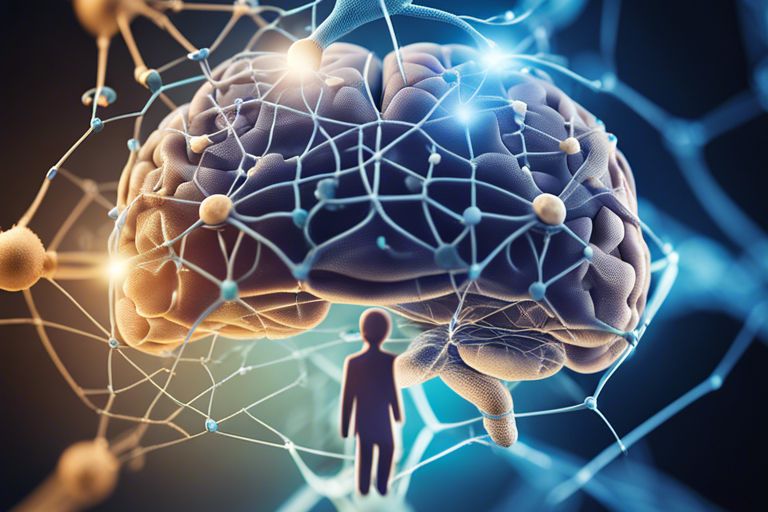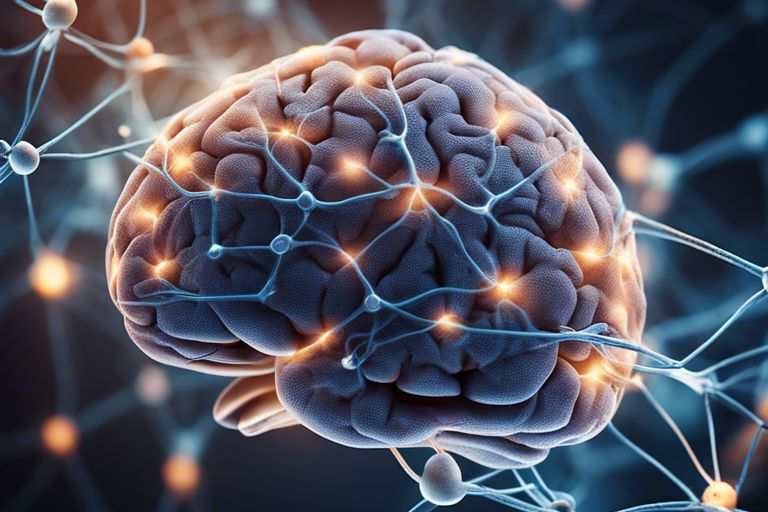Autism Spectrum Disorder (ASD) is a complex developmental condition that affects how a person perceives the world and interacts with others. With rates of ASD diagnosis on the rise, it has become crucial to explore into the potential causes behind this condition. Understanding the key factors that may contribute to the development of ASD is essential not only for early detection and intervention but also for raising awareness and supporting individuals on the spectrum. In this blog post, we will explore some of the most significant theories and potential triggers associated with Autism Spectrum Disorders, shedding light on this intricate neurological condition.
Key Takeaways:
- Genetic factors: Research suggests that genetic factors play a significant role in the development of Autism Spectrum Disorders (ASD).
- Environmental influences: Exposure to certain environmental factors during pregnancy or early childhood may contribute to the risk of developing ASD.
- Brain development: Differences in brain development and connectivity are believed to be potential causes of ASD.

Genetic Factors
In the realm of Autism Spectrum Disorders (ASD), genetic factors are considered to play a significant role in the development of this complex neurodevelopmental condition. Understanding the genetic underpinnings of ASD is crucial in shedding light on the potential causes and risk factors associated with this condition.
Heritability of Autism
Research studies have consistently shown that ASD has a strong genetic component, with heritability estimates ranging from 70% to 90%. This suggests that genetic factors contribute significantly to the development of ASD within families.
Furthermore, twin studies have provided compelling evidence for the inheritance patterns of ASD, with identical twins showing a higher concordance rate compared to non-identical twins. The heritability of autism is a complex interplay of various genetic factors, making it a multifactorial disorder.
Specific Genes Associated with ASD
Several specific genes have been identified as associated with an increased risk of ASD. These include SHANK3, CHD8, SCN2A, and PTEN, among others. Mutations or alterations in these genes have been implicated in the pathogenesis of ASD.
The identification of these specific genes has provided valuable insights into the underlying biological mechanisms of ASD. Understanding the roles that these genes play in brain development and function is crucial for advancing our knowledge of ASD.
Future research is aimed at exploring the interactions between these specific genes and how they contribute to the complexity of ASD. Identifying these genetic factors opens up new avenues for potential treatments and interventions targeted at addressing the underlying causes of ASD. The development of personalised therapies based on individual genetic profiles holds promise for improving outcomes for individuals with ASD.

Environmental Influences
When delving into the potential causes of Autism Spectrum Disorders, it is crucial to consider the impact of environmental influences. These factors, both prenatal and postnatal, play a significant role in the development of ASD. What Causes Autism? is a complex question with no singular answer, but exploring environmental influences is vital in understanding the condition.
Prenatal Environmental Factors
During pregnancy, various environmental factors can influence the development of the foetal brain and potentially contribute to the risk of ASD. These factors may include exposure to toxins, infections, maternal health conditions, and genetic vulnerabilities. Knowing how these factors interact and impact neurodevelopment is crucial in unravelling the mysteries of autism.
- Toxins
- Infections
- Maternal health conditions
- Genetic vulnerabilities
Postnatal Environmental Factors
After birth, postnatal environmental factors continue to play a critical role in the development of ASD. Factors such as exposure to pollutants, dietary influences, social interactions, and gene-environment interactions can impact the manifestation of autism. This ongoing influence underscores the importance of considering environmental factors beyond the prenatal period.
- Pollutants
- Dietary influences
- Social interactions
- Gene-environment interactions
Further research into postnatal environmental factors is essential to deepen our understanding of how external influences can shape the trajectory of ASD. This knowledge can pave the way for targeted interventions and support strategies to improve the lives of individuals on the autism spectrum.
- Interventions
- Support strategies
- Improving lives

Neurobiological Aspects
Brain Structure and Function in ASD
Research into brain structure and function in individuals with Autism Spectrum Disorders (ASD) has revealed differences compared to neurotypical individuals. Studies have shown that individuals with ASD may have abnormal brain sizes, particularly enlargement in certain areas such as the amygdala, which is associated with processing emotions. Additionally, differences in connectivity between brain regions have been observed, which may contribute to the characteristic challenges with social communication and repetitive behaviours seen in individuals with ASD.
Furthermore, functional magnetic resonance imaging (fMRI) studies have indicated altered patterns of brain activity in individuals with ASD during tasks related to social cognition and communication. These findings suggest that brain function is also disrupted in individuals with ASD, potentially influencing their behavioural characteristics and responses to stimuli.
Neurotransmitter and Hormonal Abnormalities
Studies have indicated that individuals with ASD may exhibit neurotransmitter and hormonal abnormalities compared to neurotypical individuals. Imbalances in neurotransmitters such as serotonin, dopamine, and gamma-aminobutyric acid (GABA) have been identified in individuals with ASD. These neurotransmitters play crucial roles in regulating mood, behaviour, and cognition, highlighting the potential impact of these abnormalities on the manifestation of ASD symptoms.
Additionally, hormonal abnormalities, such as disrupted levels of oxytocin and cortisol, have been reported in individuals with ASD. Oxytocin, often referred to as the “love hormone,” is implicated in social bonding and behaviour, while cortisol is a key stress hormone. The dysregulation of these hormones in individuals with ASD could contribute to difficulties in social interaction and heightened stress responses.
Further research is needed to fully understand the complex interplay between neurotransmitter and hormonal abnormalities in individuals with ASD and how these factors may contribute to the development and progression of the disorder. Understanding these neurobiological aspects is critical for the development of effective interventions and support strategies for individuals with ASD.
Interaction Between Genetics and Environment
When exploring the potential causes of Autism Spectrum Disorders (ASD), it is crucial to consider the intricate interaction between genetics and the environment. Both genetic predispositions and environmental factors play a significant role in the development of ASD. Understanding how these two factors interact can provide valuable insights into the complex nature of autism.
Epigenetics and ASD
Epigenetics refers to changes in gene expression that do not involve alterations in the DNA sequence itself. Research has shown that epigenetic modifications can influence the risk of developing ASD. Factors such as prenatal environment, exposure to toxins, and nutrition can all impact epigenetic processes, potentially contributing to the development of autism.
Furthermore, studies have indicated that certain epigenetic changes may be reversible, offering hope for the development of targeted interventions for individuals with ASD. By understanding the role of epigenetics in autism, researchers can potentially identify new avenues for treatment and support.
The Diathesis-Stress Model in ASD
The Diathesis-Stress Model suggests that individuals inherit a predisposition (diathesis) for a disorder, which is then triggered by environmental stressors. In the context of ASD, this model posits that genetic vulnerabilities interact with environmental factors to increase the likelihood of developing autism. Factors such as prenatal exposure to stress, infections, or toxins may contribute to the expression of ASD in individuals with a genetic predisposition.
Understanding the Diathesis-Stress Model is crucial in unraveling the complex nature of ASD. By recognising the interplay between genetic susceptibilities and environmental influences, researchers and healthcare professionals can gain a more comprehensive understanding of the factors contributing to autism spectrum disorders. This model highlights the importance of addressing both genetic and environmental factors in the assessment and management of individuals with ASD.
Exploring the Potential Causes of Autism Spectrum Disorders
Investigating the potential causes of Autism Spectrum Disorders is crucial for understanding and addressing this complex neurodevelopmental condition. Through research and studies, various factors such as genetic, environmental, and neurological influences have been identified as potential contributors to the development of ASD. While the exact causes remain unclear, a multifactorial approach is necessary to unravel the complexities of Autism Spectrum Disorders. Continued exploration and awareness of these potential causes are vital for improving early detection, intervention strategies, and support for individuals living with ASD. By delving deeper into these causes, we move closer to enhancing our understanding and ultimately improving the lives of those affected by Autism Spectrum Disorders.
FAQ
Q: What are Autism Spectrum Disorders (ASD)?
A: Autism Spectrum Disorders (ASD) are a group of complex brain development disorders that affect communication, social interaction, and behaviour.
Q: What are the potential causes of Autism Spectrum Disorders?
A: The potential causes of Autism Spectrum Disorders are believed to be a combination of genetic and environmental factors.
Q: Are genetic factors responsible for Autism Spectrum Disorders?
A: Yes, genetic factors play a significant role in Autism Spectrum Disorders, as certain genetic mutations and variations have been linked to the condition.
Q: Can environmental factors contribute to the development of Autism Spectrum Disorders?
A: Yes, environmental factors such as prenatal exposure to certain chemicals, maternal health during pregnancy, and complications during birth can contribute to the development of Autism Spectrum Disorders.
Q: Is there a link between vaccinations and Autism Spectrum Disorders?
A: Extensive research has found no link between vaccinations and Autism Spectrum Disorders. Vaccinations are safe and important for preventing serious illnesses.
Q: How is Autism Spectrum Disorder diagnosed?
A: Autism Spectrum Disorder is typically diagnosed through a comprehensive evaluation that includes observing the child’s behaviour, development history, and interviews with parents and caregivers.
Q: How can individuals with Autism Spectrum Disorders be supported?
A: Individuals with Autism Spectrum Disorders can be supported through early intervention services, behavioural therapy, speech therapy, occupational therapy, and educational support tailored to their needs.







